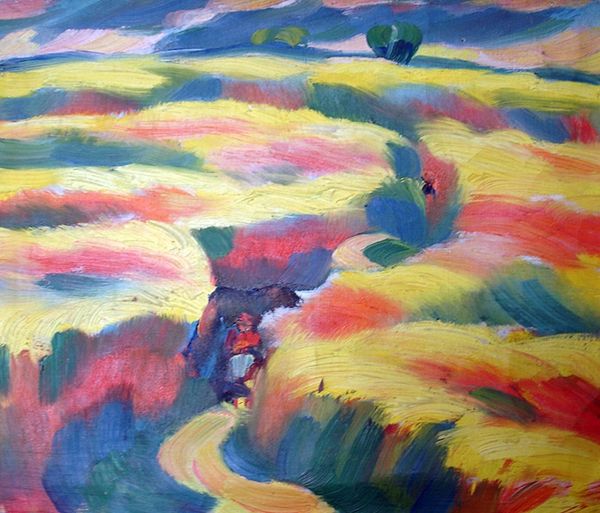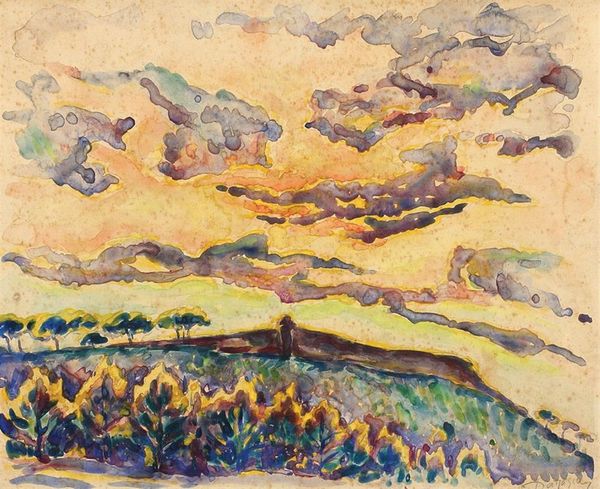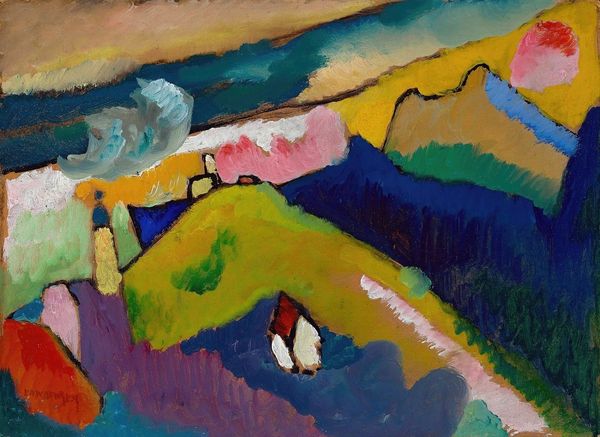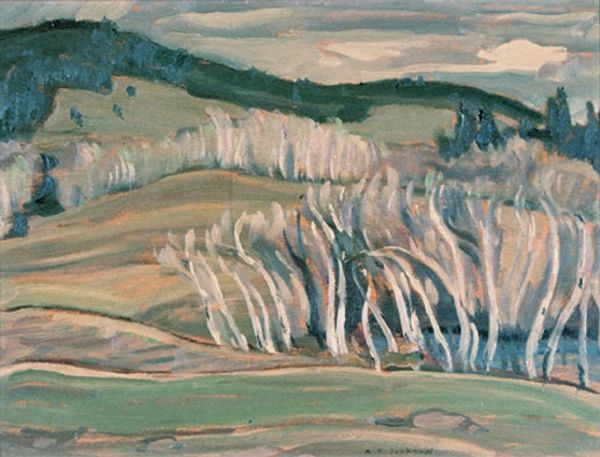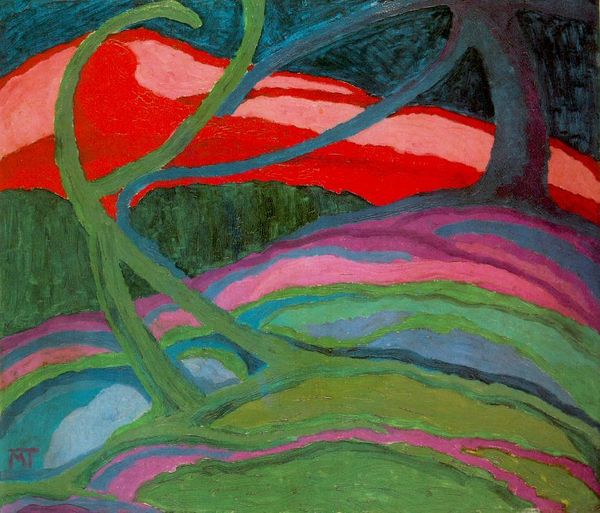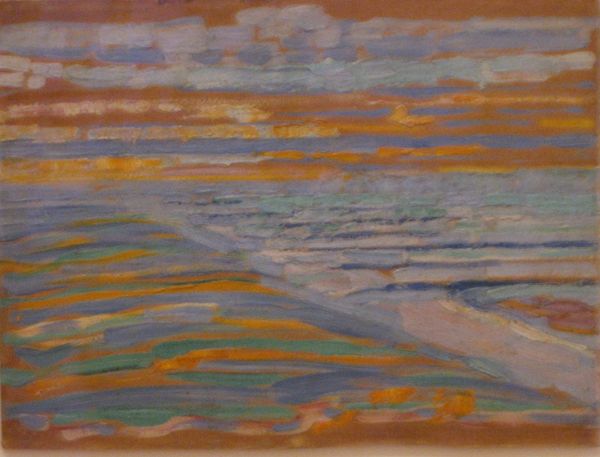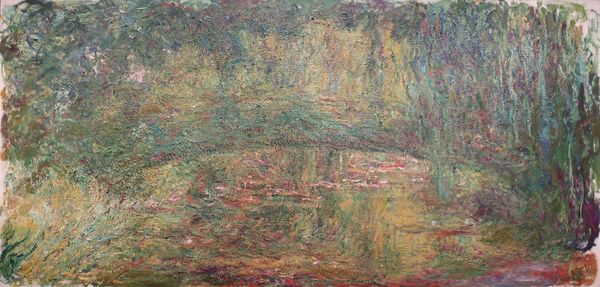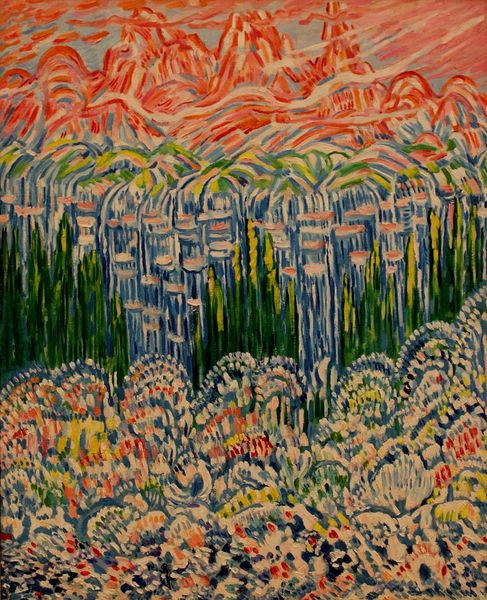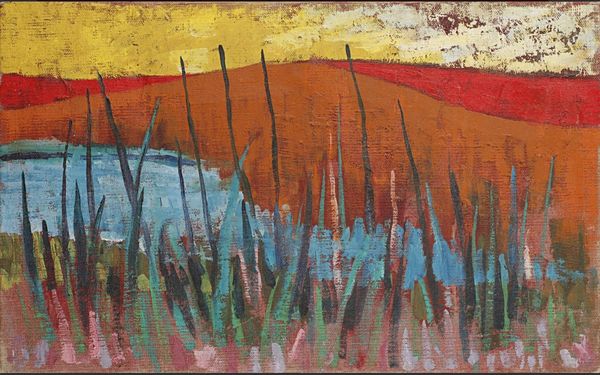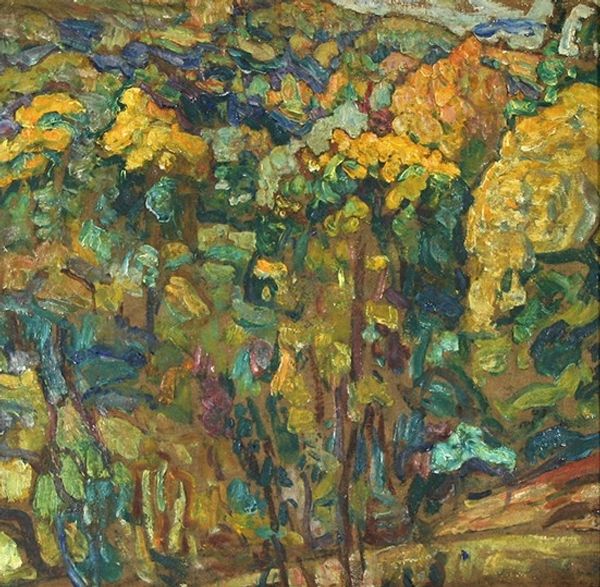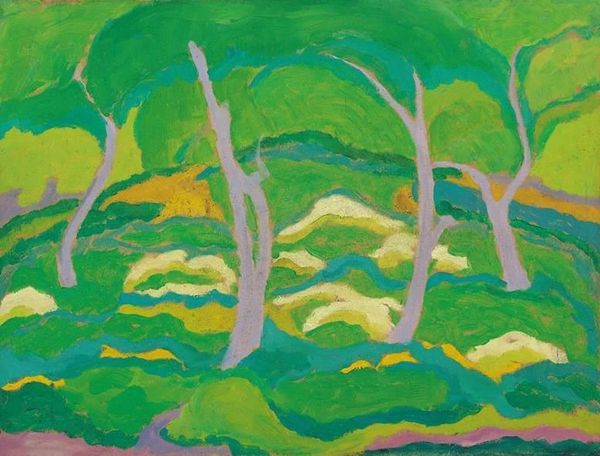
painting, plein-air, oil-paint, impasto
#
abstract expressionism
#
painting
#
plein-air
#
oil-paint
#
landscape
#
impasto
#
expressionism
#
abstract art
#
post-impressionism
#
expressionist
Copyright: Vladimir Dimitrov,Fair Use
Curator: Welcome. Here we have an oil painting on what appears to be a moderately sized canvas. Its title is, simply, "Untitled," and the painting is attributed to Vladimir Dimitrov. Editor: Well, my initial impression is one of intense texture. The thick impasto creates a field of raised brushstrokes, almost like a topographic map. Curator: Indeed. The painting’s surface is quite active. Observe the vibrant palette; Dimitrov employs yellows, oranges, greens, and blues with dynamic juxtaposition. The painting exemplifies plein-air, capturing a scene from life. We may regard this landscape from the vantage of Post-Impressionism and Expressionism, through Dimitrov’s expressive treatment of brushstroke and vibrant colors. Editor: And it's important to note what an artist chooses to depict en plein air, isn’t it? We are encountering what at first glance seems an innocuous natural landscape, but consider the social and political dimensions embedded in it. Who has access to these spaces? Is this nature represented to celebrate its supposed untouched status, a construct that perpetuates damaging ideas around land ownership? Curator: Such perspective encourages us to understand artistic works not just as autonomous forms, but within broader discussions that resonate intersectionality and the politics of landscape. Editor: Exactly. For whom is this “untitled” space? Is it a space equally shared, and what hierarchies persist in it? Curator: While such sociopolitical questions remain implicit within the art, we find that the expressive composition, with its horizontality and dense arrangements of pigment, has value simply as formal elements in painting. Dimitrov clearly engages abstract painting within the traditions of landscape. Editor: Of course. Looking closely at this painting reminds us that these aesthetic qualities don't exist in a vacuum. Even an 'untitled' artwork invites viewers to question not just how we see, but what, why, and for whom we are looking at the spaces that we, too, inhabit. Curator: I concur. A thorough analysis can examine formal composition, brushstroke, and pigment, and allow the viewers to understand the complex social narratives woven within art. Editor: Precisely. Ultimately, this “Untitled” landscape offers us a canvas not just to witness art history, but to write and question its relevance today.
Comments
No comments
Be the first to comment and join the conversation on the ultimate creative platform.
